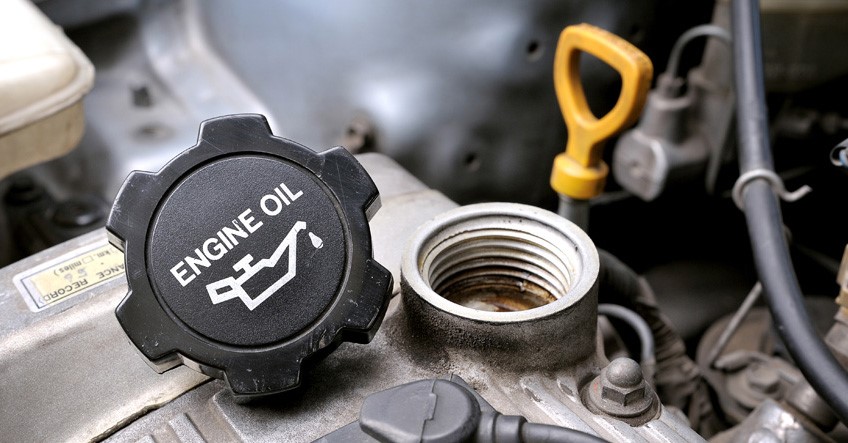Morgan Plus 4****Morgan cars territory
[It really is interesting just how the new ones are so like the old ones. We will hopefully see a few of these newer variants in the US in the near future. Mark]
Posts specific to information relating to the Morgan Sports Car
[It really is interesting just how the new ones are so like the old ones. We will hopefully see a few of these newer variants in the US in the near future. Mark]
[Any car that sits is a travesty! Get your car out, drive it. If it’s broken, fix it!! Go to a show. Let it be seen. It’s why we have these things! Mark]

[Changing your vehicle’s engine oil is not difficult but unfortunately we sometimes fail to perform this recurring task. This can happen for any number of reasons; lack of time, lack of space, lack of tools, etc. However, changing the oil is one of the most important things you can do to keep your Morgan on the road. If you can’t do it at home take the car to a oil changing service in town. They are everywhere. Just don’t forget to get it done. It is best to change your oil as suggested by your Morgan handbook, but in general every 3,000 – 5,000 miles or three months or so. Changing the engine oil too often won’t hurt the car! In addition to mileage you may need to change the engine’s oil for other reasons. In many of the places we live the temperature and humidity changes wreak havoc on our engine’s oil. Water from condensation will contaminate the engine’ oil and dilute it’s ability to lubricate your motor. You may also want to change the engine’s oil when your prepare you car for a long period of disuse, e.g. the winter. (Oil can turn acidic over time and that’s not good.) Mark]
Things you’ll need from your garage :
*Check your owner’s handbook for your vehicle’s oil capacity.
**If you plan to change your oil regularly, consider investing in a small tool set, an oil filter wrench set, a quality floor jack and jack stands.
Step 1 – Park your car on a level surface and apply parking brake.
Run your engine for 5 minutes before draining oil, as warm oil drains faster than cold. Do NOT drain oil that is at full operating temperature as it will be too hot to safely handle. It is recommended that you remove the key for the ignition to preclude any accidental engine starts.
Step 2 – Jack your car up and place it on jack stands.
A jack alone will not safely support the full weight of your car. Consult your manual for the proper jacking points. The placement of a jack stand is just as important as the jack placement. The wrong placement can damage your car’s suspension or body parts.
Step 3 – Locate the oil drain plug and place the drain pan below.
The oil drain plug is usually near the front center of the engine, but some vehicles have more than one plug. Check your manual for the exact location. Loosen the plug with a socket or wrench. Make sure that the drain pan is large enough to hold 4-5 quarts of oil or more.
Step 4 – Unscrew the plug by hand.
Remove the plug by hand. While unscrewing the plug, push it back towards the vehicle. This keeps oil from rushing out until you are ready to remove the plug from the hole. Note: For engines with oil drains on the side, the oil is likely to drain at an angle, e.g. squirt out a foot or so. Position the drain pan to catch it and be sure to adjust the pan’s location as it drains.
[I have had lots of oil squirt onto the floor, outside to the pan, by not paying attention. Mark]
Step 5 – Drain all oil.
To speed up the draining process, remove the filler cap located on the top of the engine and allow air to enter from the top.
Step 6 – Replace oil plug.
Tighten the oil plug by hand and ensure it is not cross-threaded. Once the plug is snug, finish tightening it with a wrench or by hand. Always use a new drain plug gasket if you have one and never over-tighten the drain plug.
Step 7 – Remove existing oil filter.
Place the oil pan underneath the old filter to catch any remaining oil while unscrewing it. Remove the old filter using an oil filter wrench if you have one. [Sometimes a strap wrench can be used, or if necessary, stick a screw driver into the body of the filter to give you something to turn. Use a rag to clean the mounting surface. Make sure that the sealing O-ring from the old filter is not stuck to the mounting surface on the engine.
Step 8 – Lubricate new filter and screw into place by hand.
Lightly coat the rubber seal of the new filter with fresh oil. It’s usually not necessary to tighten the oil filter with the wrench. Refer to the filter’s instructions. Once the filter is installed, lower the car.
Step 9 – Clean the oil filter neck and pour in the new oil using a funnel.
Typically, you will use 4 to 5 quarts of oil, but check your manual for your vehicle’s oil capacity. Fill to three-quarters of the engine’s capacity to avoid overfilling, as there is always oil that does not drain. Then replace the cap.
Step 10 – Run the engine for a few minutes to make sure there are no leaks.
Check the area around the oil drain plug and the filter for any leaks. If you notice a leak, shut the engine off immediately and remedy any leaks. Check the dipstick afterward and add more oil if necessary.
Step 11 – Dispose of the used oil properly.
Bring your used oil to a recycling center to recycle the oil for you (or many auto parts stores or oil change service business will take it but check with them first). These are the only acceptable methods for oil disposal.
IMPORTANT TIPS:
[There is lots of speculation about the new power plant. Some say an inline 6 cylinder from BMW (like this report) while others see an I-6 as a direct competitor of the current V6 Roadster. I guess it is possible that they might go to a Supercharged or Turbocharged engine. I guess we will find out soon enough. Mark]
British sports car maker Morgan announced record results as it prepares to launch a range of vehicles in its 110th year.
The Malvern-based family-owned firm, which employs 204 staff, said profits jumped to £3.6million last year from £2million 12 months earlier.
Output dropped from 750 to 681 cars as the firm said goodbye to the thirsty V8 engine and the Aero 8 and Plus 8 models which use it.

Morgan is expected to launch a more frugal but sportier replacement at this spring’s Geneva Motor Show.
Output last year dropped from 750 to 681 cars as the firm said goodbye to the outgoing thirsty V8 engine and the Aero 8 and Plus 8 models which use it, and prepare instead for the launch of less thirsty but even sportier replacements.
This will be a new wide-bodied Morgan sports car with a new flexible aluminium chassis – which the firm has spent £7 million developing – plus an expected leaner, meaner six-cylinder petrol engine from BMW, which bosses believe will together create ’the most dynamically capable production Morgan ever’.
Chairman Dominic Riley said that as part of a five-year strategy the business had increased the gross margin on its cars from 25 per cent to 35 per cent, making it more efficient and profitable.
Morgan exports 70 per cent of its production to around 50 countries.
Riley said they were taking prudent precautions to stockpile and store sufficient engines to see them through any short-term Brexit hiccup.
He said: ‘We’ve been trading with Europe for 110 years.
‘So we’re very adaptable, nimble and flexible. We’re taking sensible measures.’
Morgan is set to launch an all-new sports car this year, and the first shots of prototypes testing have emerged.

As expected, the model’s design is a familiar adaptation of the 1930s-inspired look that Morgans have carried for decades, set to evolve further with a new range-topping model in 2020. But under the skin there’s substantial developments.
The new model, known internally as the ‘Wide Body’, will make use of an all-new and lighter bonded aluminium platform. The company also says the new car will feature “a powertrain never before installed in a Morgan”.

This year marks the 50th – and final – year of the Malvern-based maker fitting V8 engines to its cars. The final examples of the Aero 8 and Plus 8, fitted with BMW’s N62 V8, will be kept for Morgan’s heritage fleet. It is thought that a downsized, forced-induction six-cylinder engine will be used for an upcoming flagship model, due in the early 2020s – and this could be the powertrain used for next year’s car.
Morgan claims the sports car is positioned above the Roadster, Plus 4 and 4/4 in performance terms, but is “not designed to be a direct replacement for the outging Plus 8 and Aero 8”. Those models will be replaced in the next few years by the new flagship.
The new car’s chassis is said to be twice as stiff as the aluminium chassis used in previous flagship Morgans, which together with the new engine “will result in the most dynamically capable production Morgan ever”, according to the firm.

Graham Chapman, Morgan’s technology director, says next year’s launch “is the culmination of several years of unprecedented development in design and engineering for Morgan. This has produced the most advanced development programme in Morgan’s history, the results of which we cannot wait to share with our customers worldwide”.